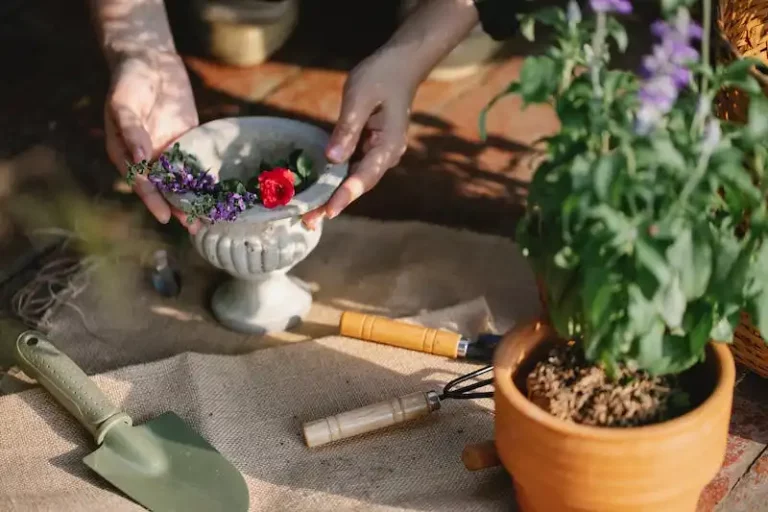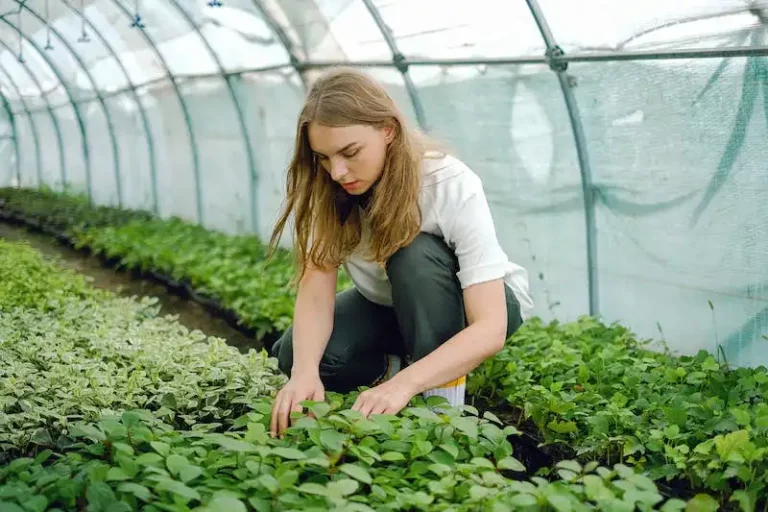Tom’s Carnivores is a specialist nursery located in Wilmington, with a focus on growing and selling a wide variety of carnivorous plants. These plants are unique because they can capture and digest prey.
One of the most popular carnivorous plants is the Venus Flytrap. This amazing plant has leaves that can produce a trap and catch insects as small as flies whenever they land on the trigger hairs. The trap then closes shut and begins to digest the prey.
Another famous carnivorous plant is the Pitcher Plant. It has tall columnar leaves that form a cup-like structure that holds water and digestive juices. Insects are attracted to the flowers and fall into the cup, where they are slowly digested.
Growing carnivorous plants can be a challenge, but with the right information and care, it is definitely achievable. First, it is important to remember that these plants require a specific growing environment. They thrive in acidic soil, so a mixture of sphagnum moss and sand is ideal. Additionally, they need a lot of sunlight, so placing them in a location where they can receive at least 6 hours of direct sunlight is recommended.
When it comes to watering, it is crucial to avoid using tap water. Carnivorous plants are sensitive to minerals found in water, so it is best to use distilled water or rainwater. Water the plants from below by placing them in a tray of water, allowing them to soak up the water they need. However, make sure the tray is vented to prevent the plants from sitting in stagnant water for too long.
Growing Tips for Venus Flytraps
Venus flytraps are fascinating and unique carnivorous plants that are popular among plant enthusiasts. If you are interested in growing Venus flytraps, here are some tips to help you get started:
1. Buying Venus Flytrap Seeds
If you want to start from scratch, you can buy Venus flytrap seeds. However, keep in mind that they require a period of dormancy before they germinate. It is best to buy reputable seed packs that provide detailed instructions.
2. Providing the Right Growing Conditions
Venus flytraps thrive in bright but indirect light. They need at least 4-8 hours of sunlight per day, so placing them near a window or using grow lights is ideal. Make sure to maintain a temperature between 70-90°F (21-32°C), as extreme heat or cold can harm the plants.
3. Creating the Perfect Soil and Watering
Venus flytraps prefer a soil mix of peat moss and perlite, with a pH between 4 and 5.5. They also need to be watered with distilled or rainwater to avoid mineral buildup. Keep the soil moist but not waterlogged, and ensure good drainage.
4. Feeding Your Venus Flytraps
Venus flytraps capture their own prey, but if you want to supplement their diet, you can feed them small insects like fruit flies or gnats. Avoid feeding them anything larger than one-third the size of the trap to prevent damage.
5. Understanding the Dormancy Period
Venus flytraps go through a period of dormancy during the winter months. During this time, their growth slows down, and some leaves may die off. It is important to provide them with a cooler environment, such as placing them outside in a sheltered location or in a refrigerator. This period is essential for their overall health and vitality.
6. Propagating Venus Flytraps
Venus flytraps can be propagated by division or leaf cuttings. To divide the plant, carefully separate the rhizomes and plant them in separate pots. Leaf cuttings can be taken by cutting a healthy leaf and placing it in a container with damp sphagnum moss. Both methods require patience and proper care.
Following these tips will help ensure that your Venus flytraps grow and thrive. Remember to be patient and provide the right conditions for these fascinating plants!
The Venus Flytrap A Complete Care Guide
The Venus Flytrap, also known as Dionaea muscipula, is one of the most fascinating carnivorous plants. With its ability to catch insects and digest them, it’s a true wonder of nature. If you’re interested in growing your own Venus Flytrap, this complete care guide will show you how.
| Location | The Venus Flytrap is native to the Carolinas, so it thrives in warm and humid conditions. If you live in a different climate, you can still grow it indoors. Choose a sunny windowsill, or use artificial plant lights. |
| Soil | Use a mix of sphagnum moss and perlite for the best results. Avoid using regular potting soil as it may contain nutrients that can harm your plant. |
| Watering | Keep the soil moist at all times, but avoid overwatering. Tepid rainwater, distilled water, or reverse osmosis water are ideal for watering your Venus Flytrap. |
| Feeding | Although your Venus Flytrap can catch insects on its own, you can supplement its diet with small pieces of raw meat or freeze-dried insects. Remember not to overfeed as it can stress the plant. |
| Dormancy | Venus Flytraps go through a winter dormancy period. During this time, the leaves will turn black and die back. It’s essential to allow the plant rest to ensure its continued health. |
| Temperature | Venus Flytraps thrive in temperatures between 70-85°F (21-29°C). They can tolerate colder temperatures down to 40°F (4°C) for short periods, but it’s best to avoid frost or freezing conditions. |
If you want to buy a Venus Flytrap, make sure to purchase from a reputable grower. Look for healthy plants with mature traps and well-defined hairs. Avoid purchasing from locations without a wide variety of carnivorous plants, as they may not have specialized knowledge.
By following this complete care guide, you can learn how to successfully grow and care for your Venus Flytrap. Enjoy the wonders of this unique carnivorous plant!
Let’s get started
If you are interested in growing Tom’s Carnivores, there are a few things you need to know. First of all, it is important to choose the right location for your plants. Carnivorous plants thrive in areas with plenty of sunlight, so make sure to place them in a sunny spot, preferably above ground level to avoid any potential flooding.
When it comes to feeding, you should be aware that carnivorous plants do not need to be fed as often as other plants. They mainly rely on insects for nutrients, which they catch with their specialized traps. This means that you only need to feed them whenever insects are available, which is usually during the summer months.
To get started with growing carnivorous plants, you can consider buying seeds or already established plants. If you decide to go with seeds, keep in mind that some species, like the Venus flytrap, can take a while to germinate and grow. It is also important to note that seeds from reputable sources are the best option to ensure quality plants.
When planting the seeds, you will need a plastic tray or pot filled with a peat-free compost mix. The soil should be kept moist but not soaking wet, as excessive moisture can cause the seeds to rot. You can also use a fungicide and foliar fertilizer to promote healthy growth.
In terms of care and maintenance, carnivorous plants are relatively easy to take care of. However, there are a few things you should keep in mind. For example, during the winter months, most carnivorous plants go dormant. During this time, it is best to keep them in a cool location, such as a basement or shed, to protect them from frost.
Some carnivorous plants, like the Carolina trumpet pitcher plant, produce small flowers during the growing season. These flowers can attract insects and help with pollination. If you want your plants to produce flowers, make sure to give them enough sunlight and water.
It is also worth noting that carnivorous plants can be somewhat prone to mutations. This means that they might not always look like the pictures you see online or in catalogs. However, these mutations do not usually affect the plant’s ability to catch insects and survive.
In conclusion, growing carnivorous plants can be a rewarding and unique experience. By following the right care instructions and providing the optimal growing conditions, you can enjoy the beauty and intriguing culture of these fascinating plants.
1 Where do Venus Flytraps come from
Venus Flytraps, also known as Dionaea muscipula, are complete carnivorous plants that have evolved to attract, capture, and digest insects for their nutrition. They are endemic to a small area in North and South Carolina, primarily in the United States.
The first Venus Flytraps were discovered in the early 18th century by botanists exploring the wetlands and bogs of Carolina. These fascinating plants have since gained worldwide attention due to their unique ability to catch prey with their specialized traps.
Flytraps typically grow in nutrient-poor environments, such as wetlands and peat bogs, where the soil is acidic and lacks essential nutrients. This is why they have adapted to supplement their diet with insects.
Venus Flytraps have leaves with flat, green stalks and hinged traps at the top, which are lined with trigger hairs. The traps snap shut whenever an insect touches these hairs, ensuring the plant can capture and digest its prey. This mechanism is believed to have evolved as a way for the plant to avoid mutations and produce healthier offspring.
During the summer, flytraps produce long stems with small white flowers on the top. However, it is important to note that these flowers are not the main attraction of the plant. The primary focus for Venus Flytraps is their trapping mechanism, which is used to feed on insects.
When it comes to caring for Venus Flytraps, it is essential to mimic their natural habitat as much as possible. They thrive in humid conditions and require a wide range of light, with at least three to eight hours of direct sunlight per day. As they are active carnivores, they also need a source of insects to catch and consume, which can be provided through periodic feeding.
Another essential aspect of Venus Flytrap care is the soil. A peat-free, mineral-free soil mixture, commonly referred to as a carnivorous plant mix, is considered ideal. This type of soil retains moisture without becoming waterlogged and provides the necessary nutrients for the plant’s health.
During the winter months, Venus Flytraps go through a dormancy period, where their traps may die back. This is a natural process, and it is crucial not to mistake it for the plant’s death. To simulate this dormancy, it is recommended to reduce watering and provide a cooler temperature between 1°C and 10°C (34°F and 50°F).
If you live in an area where flytraps do not naturally grow, you can still learn how to care for them and grow them outside. Just be aware that they are more likely to survive and thrive in their natural environment. To get started, consider purchasing mature Venus Flytraps from a reputable source and choosing a location with plenty of sunlight and suitable soil conditions.
In conclusion, Venus Flytraps originate from the Carolinas and have been fascinating carnivorous plants for centuries. Their unique trapping mechanism, natural habitat requirements, and specialized care make them a captivating addition to any plant collection.


